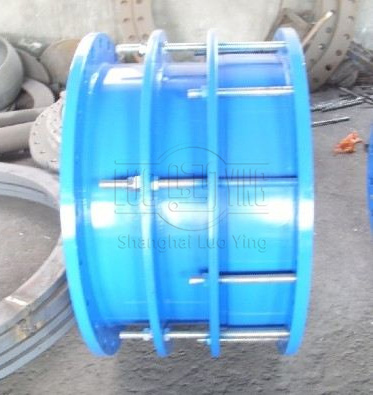luoying speaks about the role and use of casing type expansion joint
Sep-22-15
Casing type expansion joint is also called casing type expansion joint and casing type expansion joint. This product is a flexible connector for metal pipeline, its structure form is almost the same as casing type cast iron expansion joint, it is divided into two kinds of limit expansion joint and non-limit expansion joint.Advantages: it can be processed according to the expansion volume required by users, it can withstand high pressure up to 60Mpa (below DN300), good toughness, no damage to the expansion joint caused by improper operation during installation, etc. Disadvantages: The corrosion resistance is not as good as cast iron expansion joint, but the material can be changed such as stainless steel, which is costly.
Role and use.
Casing expansion joint can be axially expanded within a certain range, and also can overcome the offset caused by different axial direction of pipeline docking within a certain angle, which facilitates the installation and disassembly of valves and pipes, and can be freely expanded in the allowable expansion amount of the pipeline, and once it crosses its expansion amount, it plays a limit to ensure the operation of the pipeline. Mainly for the protection of pipeline operation, has the following roles.
1. compensate and absorb pipeline axial, lateral and angular thermal deformation; absorb equipment vibration and reduce the impact of equipment vibration on pipeline; absorb the amount of deformation of pipeline by earthquake and ground subsidence.
2. Casing type expansion joint provides convenience for the installation and removal of various water supply and drainage pipelines, water towers, pumps, water meters and valves, and plays a good regulating role for long distance pipelines due to temperature difference expansion.
Applicable media.
Suitable for conveying seawater, fresh water, hot and cold water, drinking water, domestic sewage, crude oil, fuel oil, lubricating oil, refined oil, air, gas, steam with temperature not higher than 250 degrees and granular powder and other media.


